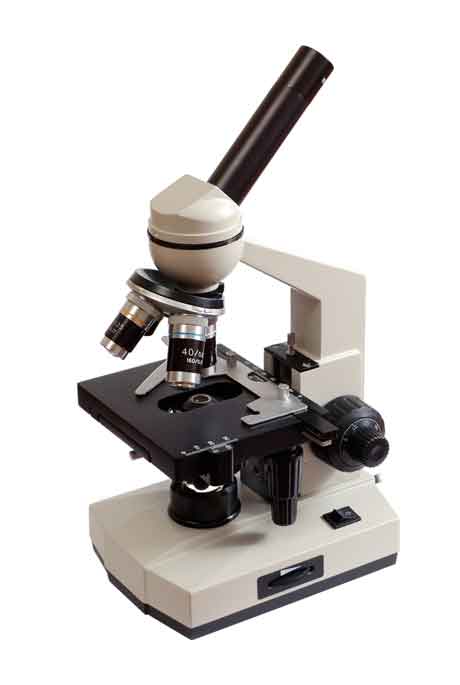If you look constantly through old science books, or if you are a science history enthusiast, then you might be well acquainted with the monocular microscope. With a single eyepiece objective, this microscope allows the user to use only one eye when viewing specimens under it. This has proven to be quite inconvenient for many researchers, who found that they suffered from eyestrain much faster when using only a single eye to do their work.
The creation of the monocular microscope before the convenient, modern-day binocular version is understandable. A prism takes the light from the image to the eyepiece, and the prism is easily placed in a microscope tube that will allow the image to travel through one eyepiece. Place two eyepieces, and the prism system becomes more complicated, and even more difficult to design, hence the higher price placed on binocular microscopes on the market.

However, monocular microscopes are still being manufactured today, and have several advances associated with them that make them much easier to use than the monocular microscope of yesterday. For instance, today’s monocular microscopes have entered the digital arena: digital monocular microscopes still have the convenience of design in terms of using a single prism to bring the light to one objective lens, as well as the convenience of documentation through picture or video capture.
Today’s digital monocular microscopes are fitted with a digital camera, which can also be joined to a preview monitor attached to the head of the digital monocular microscope. This preview monitor can allow users to see the specimen before a picture or video is taken; it can also be more convenient to look at after straining a single eye to peer through the monocular microscope’s lens. Moreover, a preview lens can allow more than one person to see the images of the specimen at one time.
The camera on a digital monocular microscope can also be attached to a computer or laptop. Most of today’s digital monocular microscopes also come with their own photo editing software. This software allows researchers to make photos of their specimens brighter or darker, and it can even allow them to take measurements of their specimens using a screen micrometer. In the past, measurements were taken using an eyepiece micrometer and a corresponding scale or measuring device on a slide. The digital monocular microscope now makes this process more precise.
The software that comes with digital monocular microscopes also allows researchers to take notes or add labels to their photographs. This is important especially in field research, where field researchers cannot print their pictures out immediately, and where notebooks and pencils might be inconvenient. Of course, if the laptop runs out of batteries, the software can no longer be used, and a researcher has to go back to conventional note-taking.
There are even cordless monocular microscopes that can be advantageous if you are working out in the field and have no access to electric outlets. A cordless monocular microscope can operate using batteries that power its light source. A cordless monocular microscope can also operate using an external light source, such as a powerful flashlight or even sunlight: this is advantageous in the field as well, since all that a researcher needs to do is adjust a mirror in order to focus light onto a specimen.
An advanced monocular microscope needs much of the same care that has to be exercised on other less advanced models of monocular microscopes. For instance, the objective and eyepiece lenses have to be cleaned regularly and kept free of dust and grime. This is especially important in digital monocular microscopes, which rely greatly on the clarity of the lenses in order to produce high quality pictures. The digital monocular microscope also has to be kept in a cool, dry place, where fungi and molds will not reside in the lenses and ruin them.
With even more research going into microscopy, the researchers of the future can look forward to monocular microscopes that offer up a good many amenities and features for a low price. And, as research progresses in many fields today, monocular microscopy has nowhere to go and nothing to do but advance as well.
You can find out more about advances in the field of monocular microscopy by visiting https://www.emailmeform.com/builder/emf/produkt/starscope-monocular-test. Here, you can also find different monocular microscopes and how they can serve your various needs while meeting your various budget constraints. With good budgeting and a lot of care with that monocular microscope you have, it can serve you well for a much longer time whether it is a product of advanced technology, or a much older but still useful model.


